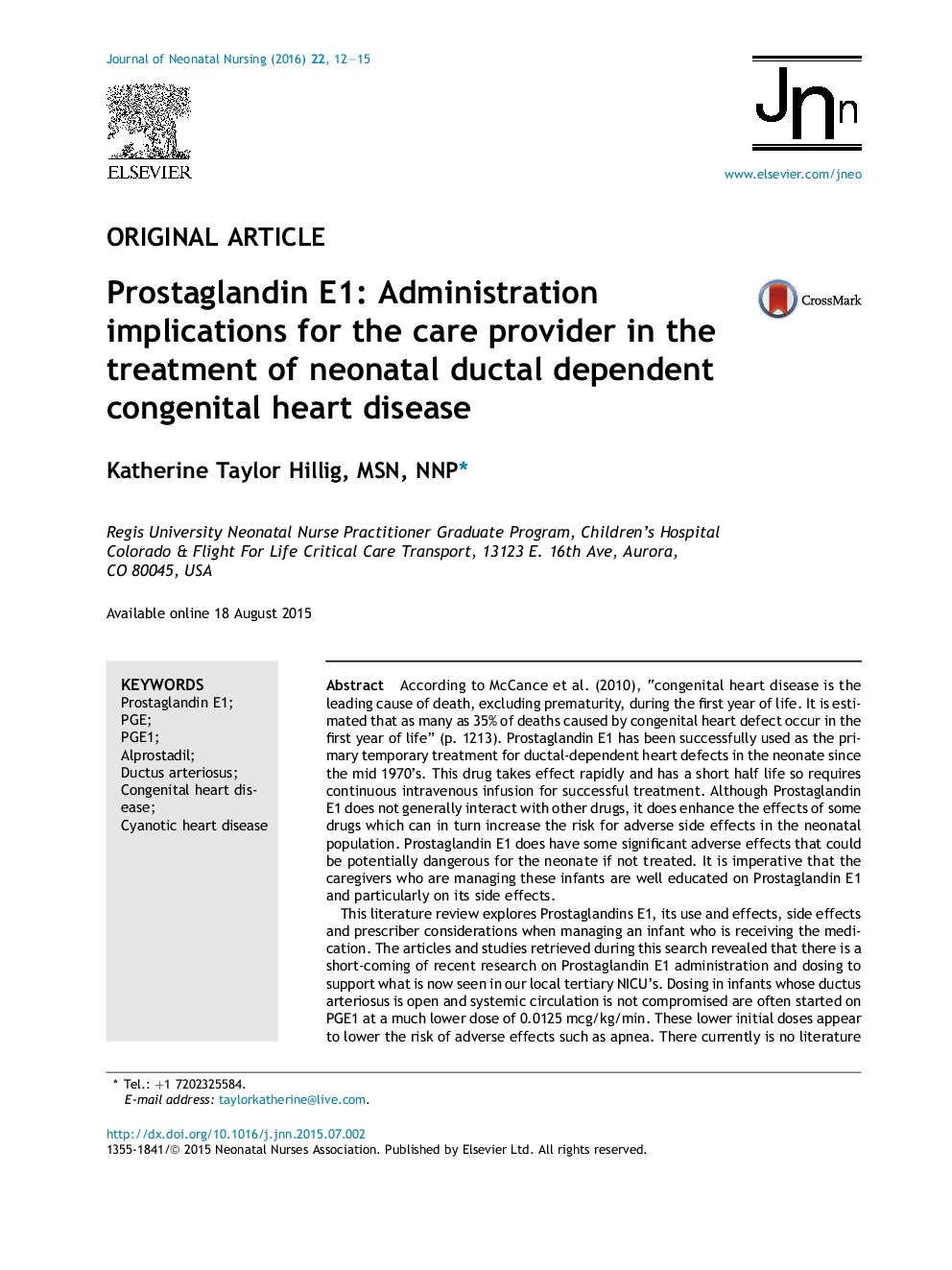| کد مقاله | کد نشریه | سال انتشار | مقاله انگلیسی | نسخه تمام متن |
|---|---|---|---|---|
| 2631256 | 1136813 | 2016 | 4 صفحه PDF | دانلود رایگان |
According to McCance et al. (2010), “congenital heart disease is the leading cause of death, excluding prematurity, during the first year of life. It is estimated that as many as 35% of deaths caused by congenital heart defect occur in the first year of life” (p. 1213). Prostaglandin E1 has been successfully used as the primary temporary treatment for ductal-dependent heart defects in the neonate since the mid 1970's. This drug takes effect rapidly and has a short half life so requires continuous intravenous infusion for successful treatment. Although Prostaglandin E1 does not generally interact with other drugs, it does enhance the effects of some drugs which can in turn increase the risk for adverse side effects in the neonatal population. Prostaglandin E1 does have some significant adverse effects that could be potentially dangerous for the neonate if not treated. It is imperative that the caregivers who are managing these infants are well educated on Prostaglandin E1 and particularly on its side effects.This literature review explores Prostaglandins E1, its use and effects, side effects and prescriber considerations when managing an infant who is receiving the medication. The articles and studies retrieved during this search revealed that there is a short-coming of recent research on Prostaglandin E1 administration and dosing to support what is now seen in our local tertiary NICU's. Dosing in infants whose ductus arteriosus is open and systemic circulation is not compromised are often started on PGE1 at a much lower dose of 0.0125 mcg/kg/min. These lower initial doses appear to lower the risk of adverse effects such as apnea. There currently is no literature found in this review that supports this change in PGE1 dosing suggesting that more research is needed to support evidence-based practice.
Journal: Journal of Neonatal Nursing - Volume 22, Issue 1, February 2016, Pages 12–15
